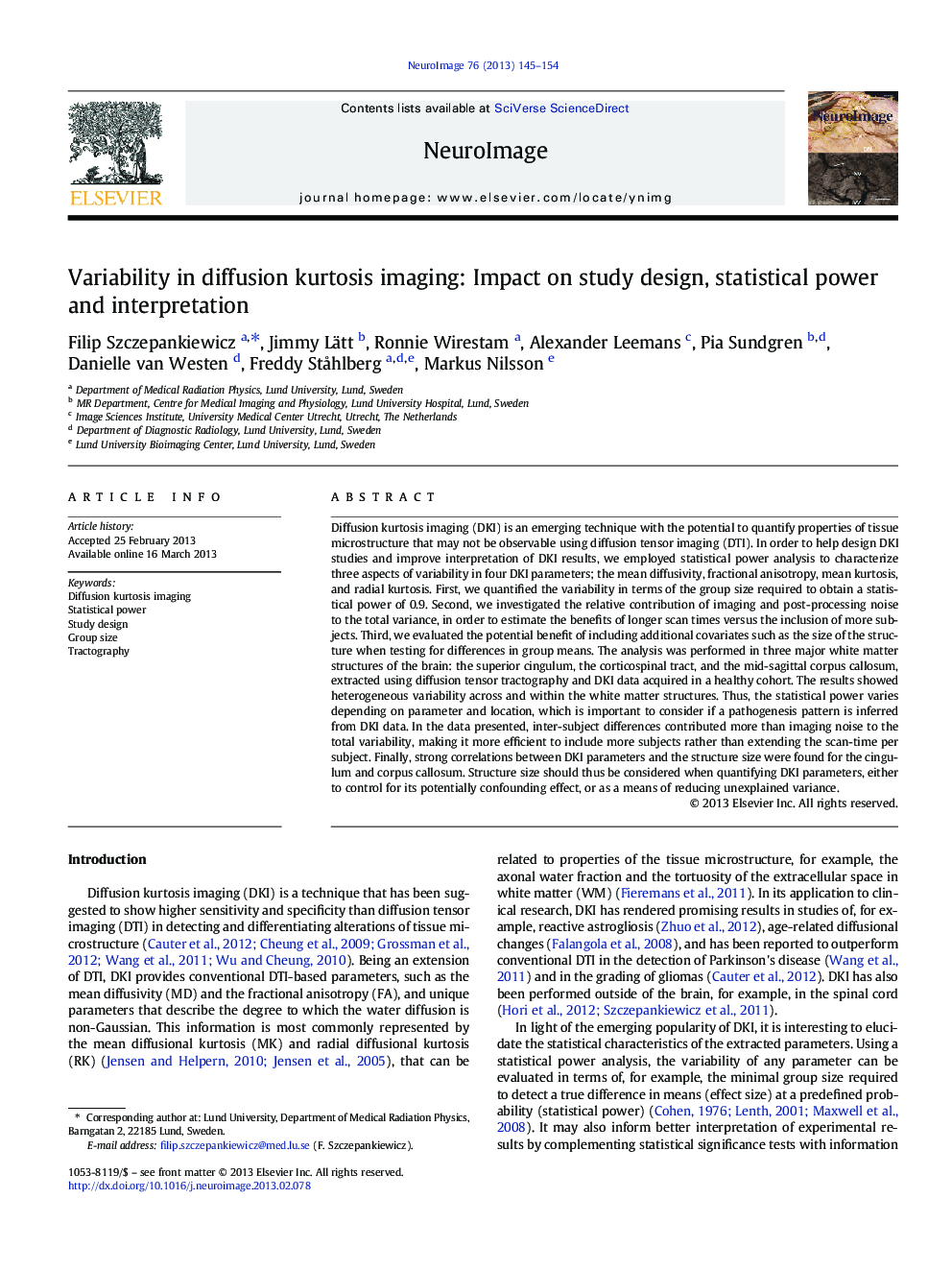| کد مقاله | کد نشریه | سال انتشار | مقاله انگلیسی | نسخه تمام متن |
|---|---|---|---|---|
| 6029403 | 1580928 | 2013 | 10 صفحه PDF | دانلود رایگان |
- The variability of DKI parameters along three white matter structures was evaluated.
- The statistical power of DKI parameters varies between anatomical locations.
- DKI parameters correlate to structure size in the cingulum and the corpus callosum.
- Improve your DKI study by scanning more subjects, not longer time per subject.
- Correcting for correlation with structure size can improve the statistical power.
Diffusion kurtosis imaging (DKI) is an emerging technique with the potential to quantify properties of tissue microstructure that may not be observable using diffusion tensor imaging (DTI). In order to help design DKI studies and improve interpretation of DKI results, we employed statistical power analysis to characterize three aspects of variability in four DKI parameters; the mean diffusivity, fractional anisotropy, mean kurtosis, and radial kurtosis. First, we quantified the variability in terms of the group size required to obtain a statistical power of 0.9. Second, we investigated the relative contribution of imaging and post-processing noise to the total variance, in order to estimate the benefits of longer scan times versus the inclusion of more subjects. Third, we evaluated the potential benefit of including additional covariates such as the size of the structure when testing for differences in group means. The analysis was performed in three major white matter structures of the brain: the superior cingulum, the corticospinal tract, and the mid-sagittal corpus callosum, extracted using diffusion tensor tractography and DKI data acquired in a healthy cohort. The results showed heterogeneous variability across and within the white matter structures. Thus, the statistical power varies depending on parameter and location, which is important to consider if a pathogenesis pattern is inferred from DKI data. In the data presented, inter-subject differences contributed more than imaging noise to the total variability, making it more efficient to include more subjects rather than extending the scan-time per subject. Finally, strong correlations between DKI parameters and the structure size were found for the cingulum and corpus callosum. Structure size should thus be considered when quantifying DKI parameters, either to control for its potentially confounding effect, or as a means of reducing unexplained variance.
Journal: NeuroImage - Volume 76, 1 August 2013, Pages 145-154
